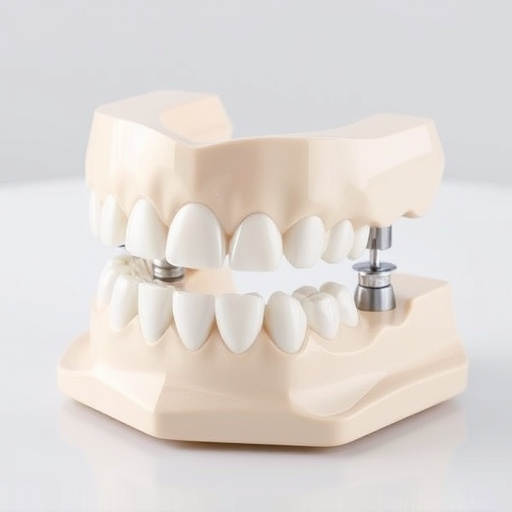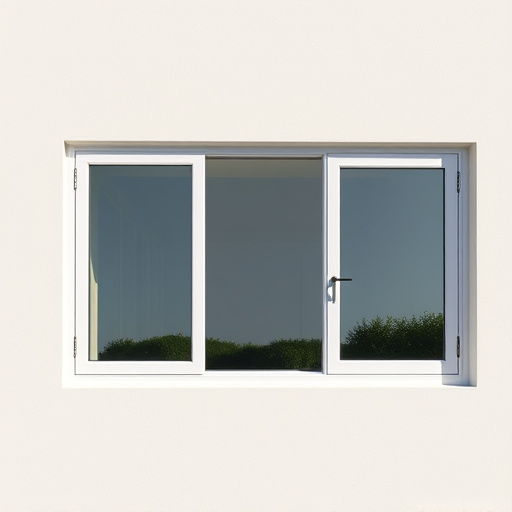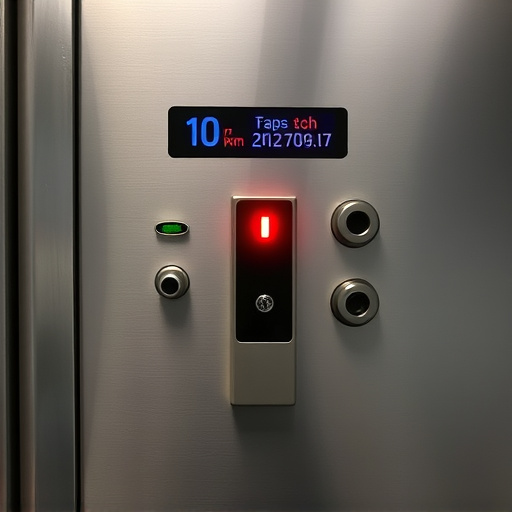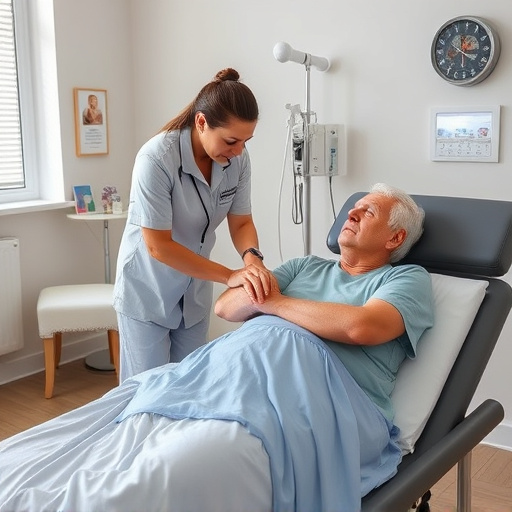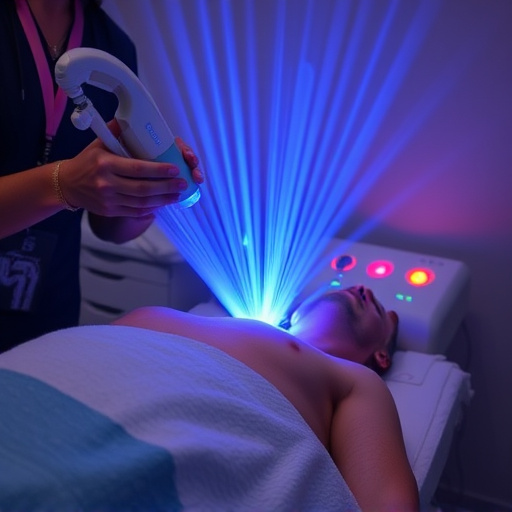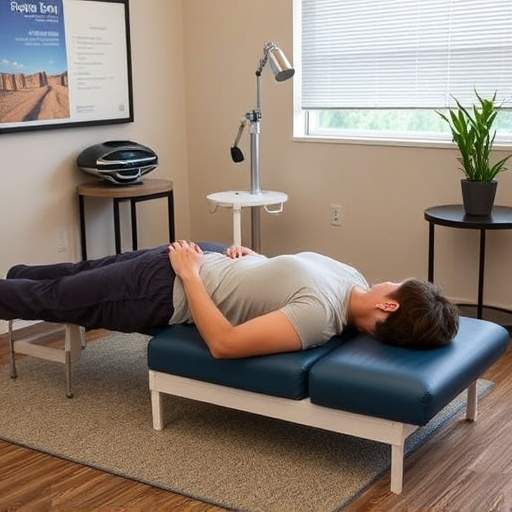Acoustic wave therapy (AWT) is a non-invasive treatment using low-intensity sound waves to stimulate healing without drugs or surgery. It enhances blood flow and cellular regeneration, effectively treating musculoskeletal injuries, improving mobility, accelerating tissue repair, and promoting bone growth. Compared to aggressive therapies like shockwave therapy, AWT offers a gentle alternative suitable for a broad range of patients, targeting specific pathways involved in inflammation, pain, and healing.
“Uncover the revolutionary world of Acoustic Wave Therapy, a non-invasive treatment approach that harnesses the power of sound. This innovative technology is transforming healthcare by offering effective solutions for various conditions.
In this article, we’ll explore the fundamentals of acoustic wave therapy and its potential. From understanding the basic principles to delving into the scientific mechanisms behind its effectiveness, we’ll uncover how targeted sound waves interact with cells. Furthermore, we’ll highlight its diverse therapeutic applications.”
- Understanding Acoustic Wave Therapy: Unlocking the Power of Sound
- The Science Behind the Waves: How They Interact with Cells
- Therapeutic Applications: Treating Conditions with Acoustic Waves
Understanding Acoustic Wave Therapy: Unlocking the Power of Sound
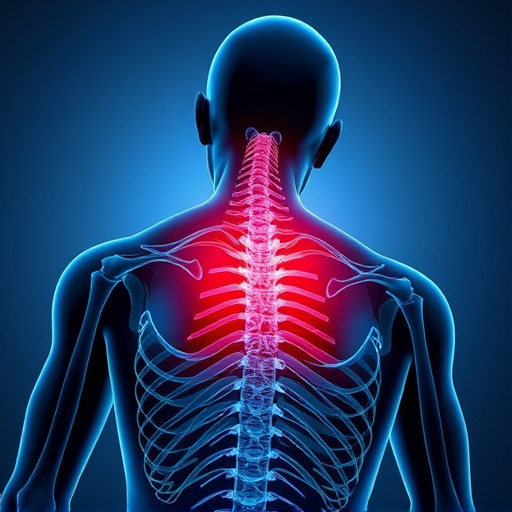
Acoustic Wave Therapy (AWT) is an innovative treatment that harnesses the power of sound waves to stimulate healing and repair within the body. Unlike traditional therapies that often rely on drugs or invasive procedures, AWT offers a non-invasive approach with minimal side effects. The science behind it lies in using low-intensity acoustic waves, which are safe for human application. These sound waves can penetrate deep into tissues, promoting blood flow and stimulating cellular regeneration.
This therapy has shown remarkable potential in treating various conditions, particularly focusing on mobility improvement and managing musculoskeletal injuries. By targeting specific areas of the body, AWT can alleviate pain associated with these injuries, accelerate tissue repair, and even promote bone growth. The gentle nature of the treatment makes it suitable for a wide range of patients, offering a promising alternative to more aggressive treatments like shockwave therapy for pain.
The Science Behind the Waves: How They Interact with Cells

The science behind acoustic wave therapy involves understanding how sound waves interact with cells at a microscopic level. When acoustic waves are applied to the body, they generate pressure and shear forces that can penetrate deep into tissues. These mechanical stimuli trigger cellular responses, leading to various beneficial effects. For example, in auto accident recovery or sports injury treatment, acoustic waves can stimulate cell proliferation and migration, which are crucial for tissue repair and regeneration.
The non-invasive nature of acoustic wave therapy makes it an attractive alternative to traditional treatments. By modulating the amplitude and frequency of the sound waves, therapists can target specific cellular pathways involved in inflammation, pain, and tissue healing. This precise control allows for effective management of conditions such as muscle strains, tendon injuries, and even chronic pain without the side effects associated with some pharmaceutical interventions.
Therapeutic Applications: Treating Conditions with Acoustic Waves
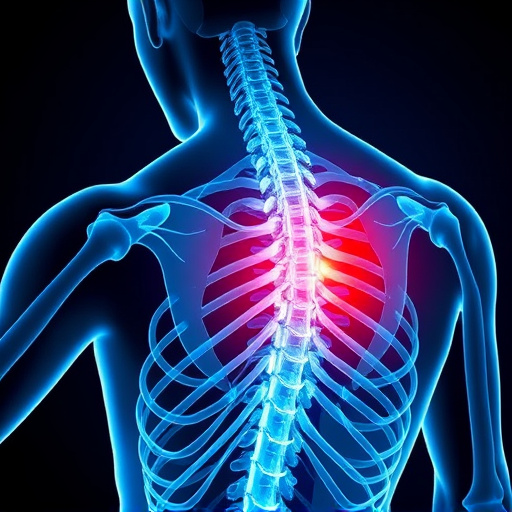
Acoustic wave therapy has emerged as a non-invasive treatment modality with a wide range of therapeutic applications. Its ability to deliver targeted energy to specific areas of the body makes it particularly effective in managing various conditions, including chronic pain and inflammation. One of its most promising uses is in the treatment of lower back pain, where acoustic waves can help reduce muscle spasms and promote healing without the need for invasive procedures or strong medications.
Beyond lower back pain, acoustic wave therapy finds utility in rehabilitative services, enhancing recovery from injuries and surgical procedures. The gentle yet powerful nature of these sound waves facilitates tissue repair, accelerates cell regeneration, and reduces scar tissue formation. This not only aids in restoring physical function but also contributes to overall patient well-being, making it a valuable addition to the arsenal of therapeutic exercises offered by healthcare professionals.
Acoustic Wave Therapy (AWT) represents a groundbreaking approach in healthcare, harnessing the power of sound waves to interact with cells and offer therapeutic benefits. By understanding the science behind AWT, we unlock a versatile tool for treating various conditions. This natural method, free from harsh chemicals, offers a promising direction for future medical treatments, potentially revolutionizing the way we address health concerns.


